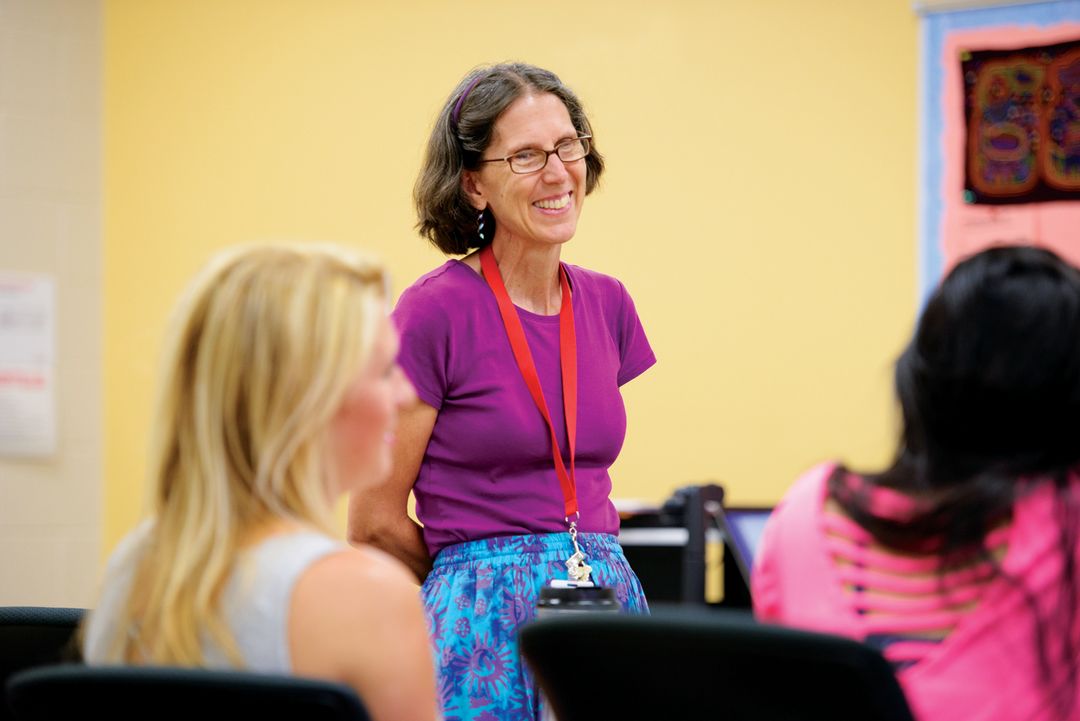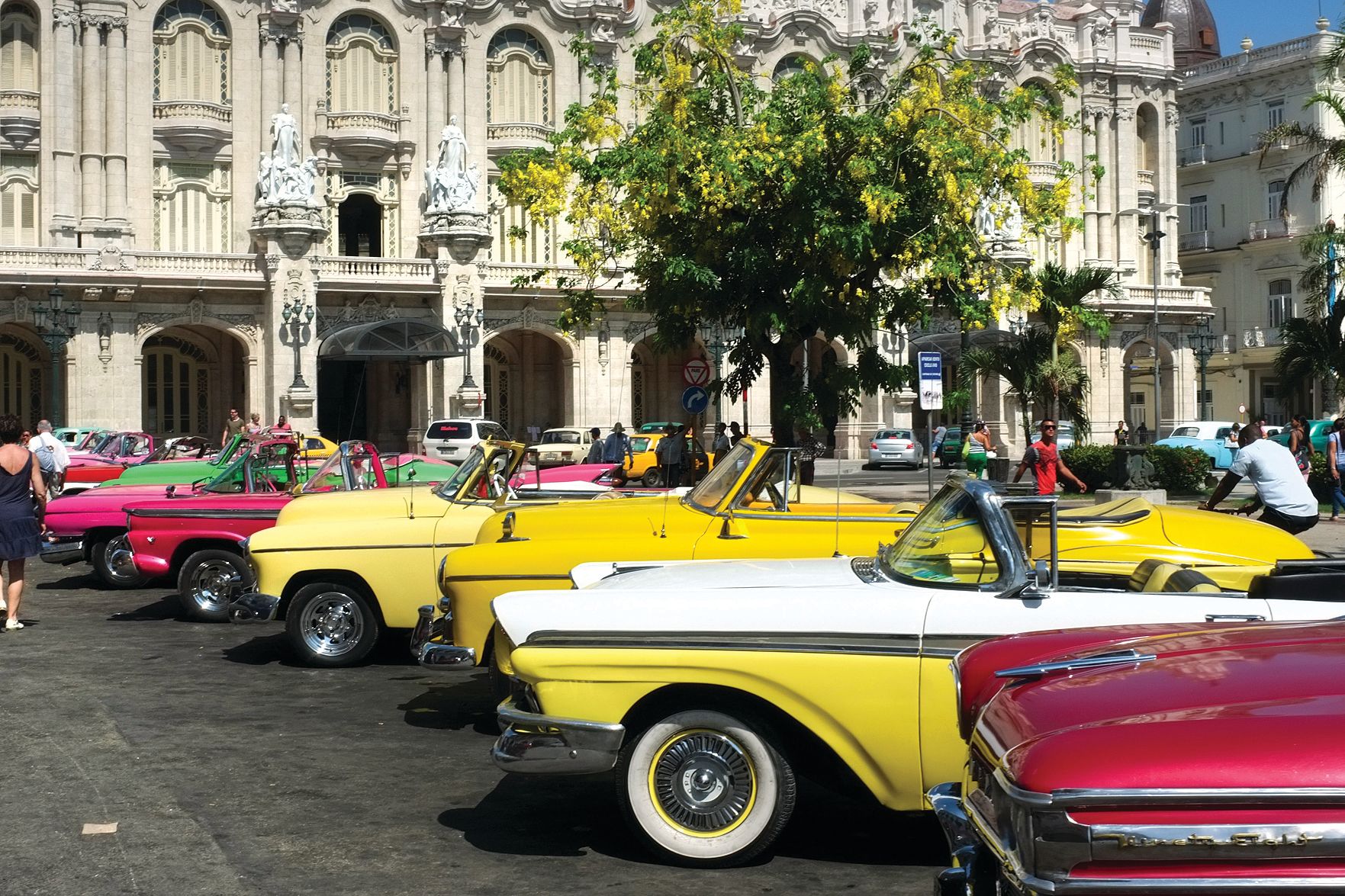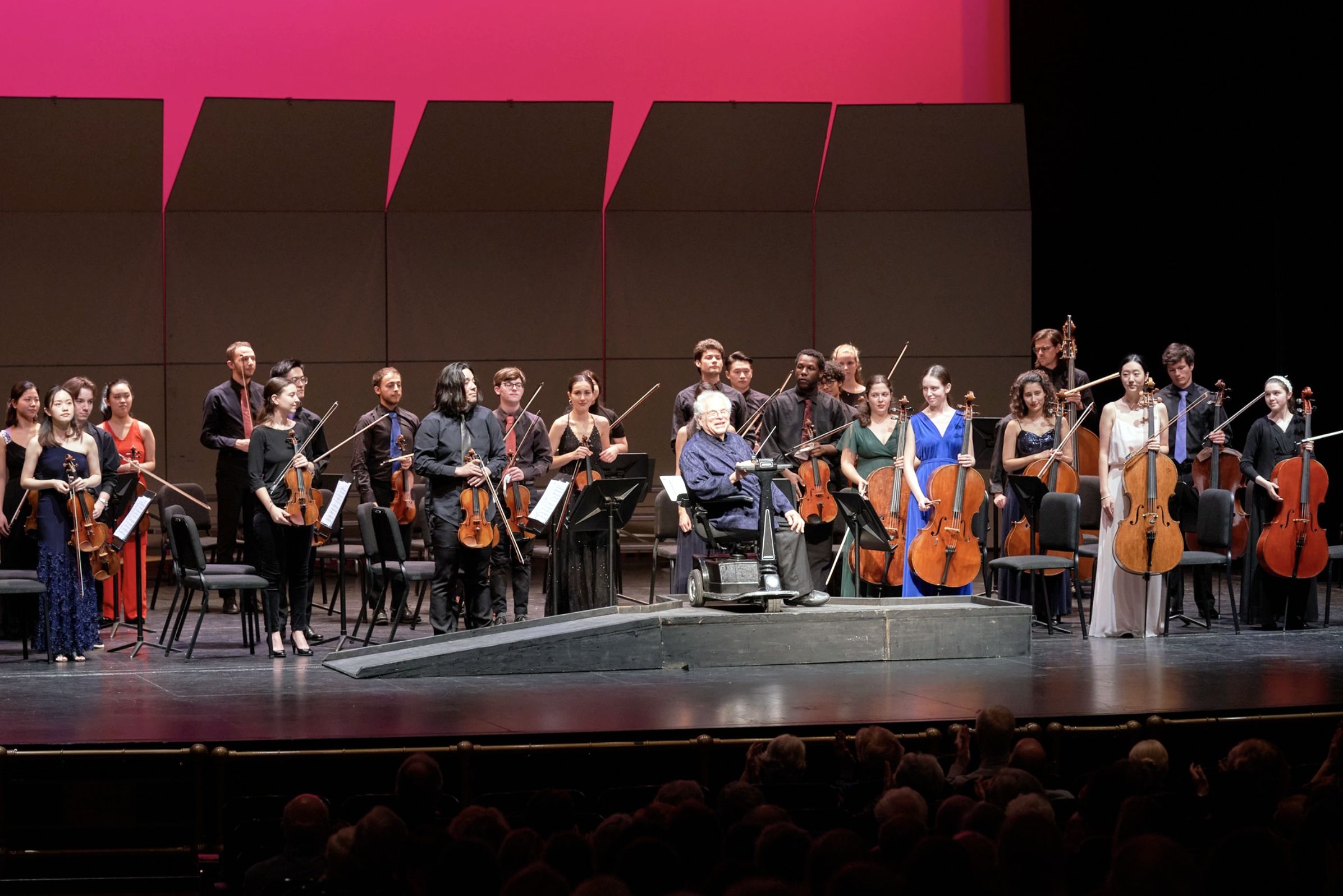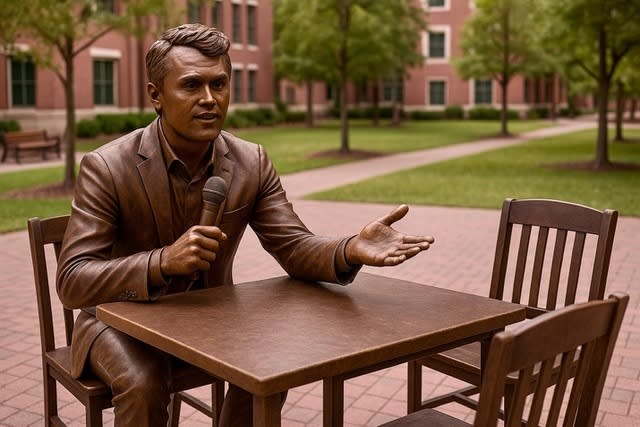Searching for Diversity in Sarasota

The author in her classroom.
Image: Chris Lake
When we moved to Sarasota from Arlington, Virginia, in 2015, I told my skeptical teens: “There’ll be some things we like more and some things we like less.” The “more” column filled up quickly: streets so dark we could see the stars, frog concertos in drainage ditches, winter sunshine, summer rainbows. Even though I have the only two children on earth indifferent to the beach, they concede that it contributes to a life that’s pleasantly “chill.”
But also a lot less diverse. What we miss most is the world.
In Arlington, we rode the Metro into D.C. next to people of every skin tone speaking Korean or Tigrinya, wearing hijab or shalwar kameez. On our dead end, every house but one had a foreign-born adult or child. Stepping outside, we smelled Cambodian fish grilling or Chinese joss sticks burning. My Arab-American kids attended Spanish/English immersion public school.
It’s not as easy to be a global mutt in Sarasota.
“I was born in Africa,” my daughter said, introducing herself at Sarasota High.
“No, you weren’t,” said a classmate.
Another said, “Your English is too good.”
In 2014, USA Today crunched Census data to create a nationwide“diversity index”—a scale from 0 to 100 that reflects the likelihood that “two random people are different by race or ethnicity.” Arlington ranked 55, the national average. Sarasota came in at 28—not monocultural but similar to an older version of the United States.
I groused to our new pediatrician.
“When I first got here, all I saw were rich, white old people,” she sympathized. “There is diversity, but you have to look harder to see it.”
I kept looking. Then one day I spotted a notice on the Suncoast Technical College marquee: P-T EVENING ESOL INSTRUCTOR NEEDED.
I started in February. “You’ll love the students,” promised the program manager.
She was right. Jorge (I have changed names to protect privacy), from Cuba, arrived each night in a different hat. “How are you, Teacher?” Every student addressed me as “Teacher,” with a capital T. “I like your class very much, Teacher.” “Thank you, Teacher.” And sometimes they passed me a peanut butter cup or a homemade dessert called “drunken sailor.”
Suncoast’s program runs on high-octane idealism about opportunity mixed with realism about the lives of adults juggling school and job and family. Classes meet Tuesday-Thursday, 6-9 p.m. during the academic year. Students may enroll at any point, paying $45 per semester. If they miss six evenings in a row, they’re dropped, but they can re-enroll the next semester. Class consists of one hour in a computer lab and two in a classroom. No homework. No grades. Periodically, SCT readministers the placement test and promotes students. The year ends with a potluck.
The accommodating structure presents pedagogical challenges. I stepped into an overflow mixed high/low intermediate class
with roots in Central and South America as well as Albania, the Czech Republic, Russia, Turkey and the Caribbean. One student could sling American slang but barely write a sentence; others understood most of the communal readings but stumbled over present and past tense. With drops and adds, rosters are always in flux, and sick children and overtime at work make attendance unpredictable. Students come tired: Omar often pulled up in his produce truck, which he’d been driving since he set out for the wholesale markets in Tampa at 4 a.m.
“Why are you studying English?” we ask each new student.
“I need better job.”
“My childrens are starting school. “
“My mom has cancer, and I go with her to the doctor.”
“I’m here on vacation and want to improve my English.”
“I want to meet girls.”
The answers are straightforward, but the stories less so. If you read “Dying Infants and No Medicine: Inside Venezuela’s Failing Hospitals” in The New York Times last May, you might fathom why Luis, an anesthesiologist, suspended his medical practice to mow lawns in Sarasota.
Constrained by their English, most of my students do hard, physical work—cleaning, painting, cooking, waitressing, dishwashing, installing HVAC systems. Yet almost a third left privileged positions, for instance as a lawyer (Cuba), marketer (Honduras), dentist (Venezuela), or rocket engineer (Russia).
Despite “the golden mountain” mythology, in my class the economic promise of the United States seemed less of a draw than its security. During our crime unit, I asked if anyone had ever been a victim; I was fishing for vocabulary like “pickpocket.” Rodrigo, a mechanic, said that he drove a bus in Honduras until a rival driver took out a hit on him. Izzy explained that her boyfriend, a Colombian restaurateur, got fed up paying protection money.
“So he went to the police?” I asked.
“So they killed him,” she said.
I brought to class The New York Times article about Venezuela. It was hard reading, on many levels. Ruben, the fist-bumping tile layer who usually sambaed into class, started stuttering. “It’s too bad.” He told us that two of his college friends, young women, had protested President Maduro’s policies. Then Ruben cocked his fingers like a gun and mimed their assassinations. Which he had witnessed.
But we also laughed a lot. We played “Simon says” and hangman. We wrote color poems. We role-played doctors and patients and detectives and eyewitnesses. We shared our favorite musicians and vacation spots; we talked about the women we most admired. In honor of the National Park Centennial, we listened to “This Land Is Your Land.”
It’s not easy to keep it simple without being simplistic, but adult students deserve nuance. After Presidents’ Day, we marveled at George Washington’s humble leadership even as we puzzled over his slaveholding. We touched on the Civil War, Progressivism, the Civil Rights Movement and the 2016 elections. My youngest student, an 18-year-old housepainter who had spent his adolescence in transit from Guatemala, worried that a President Trump would deport him and his four brothers, despite their legal status.
“Why are you teaching English?” none of my students was so nosy as to ask. I might have answered, “Because you are our future. Because it’s important that we talk to each other.” Diversity brings us ethnic restaurants—but if we interact only over a menu, then we lose multiculturalism’s most enriching benefit, the enlarging of our frames of reference.
In June I said goodbye to my class. “I feel honored that I could be a small part of your amazing journey. Thank you, Students. You are one of the best things about Sarasota.”
And in August, I said hello to my new class. Actually, I said, “Welcome.”



